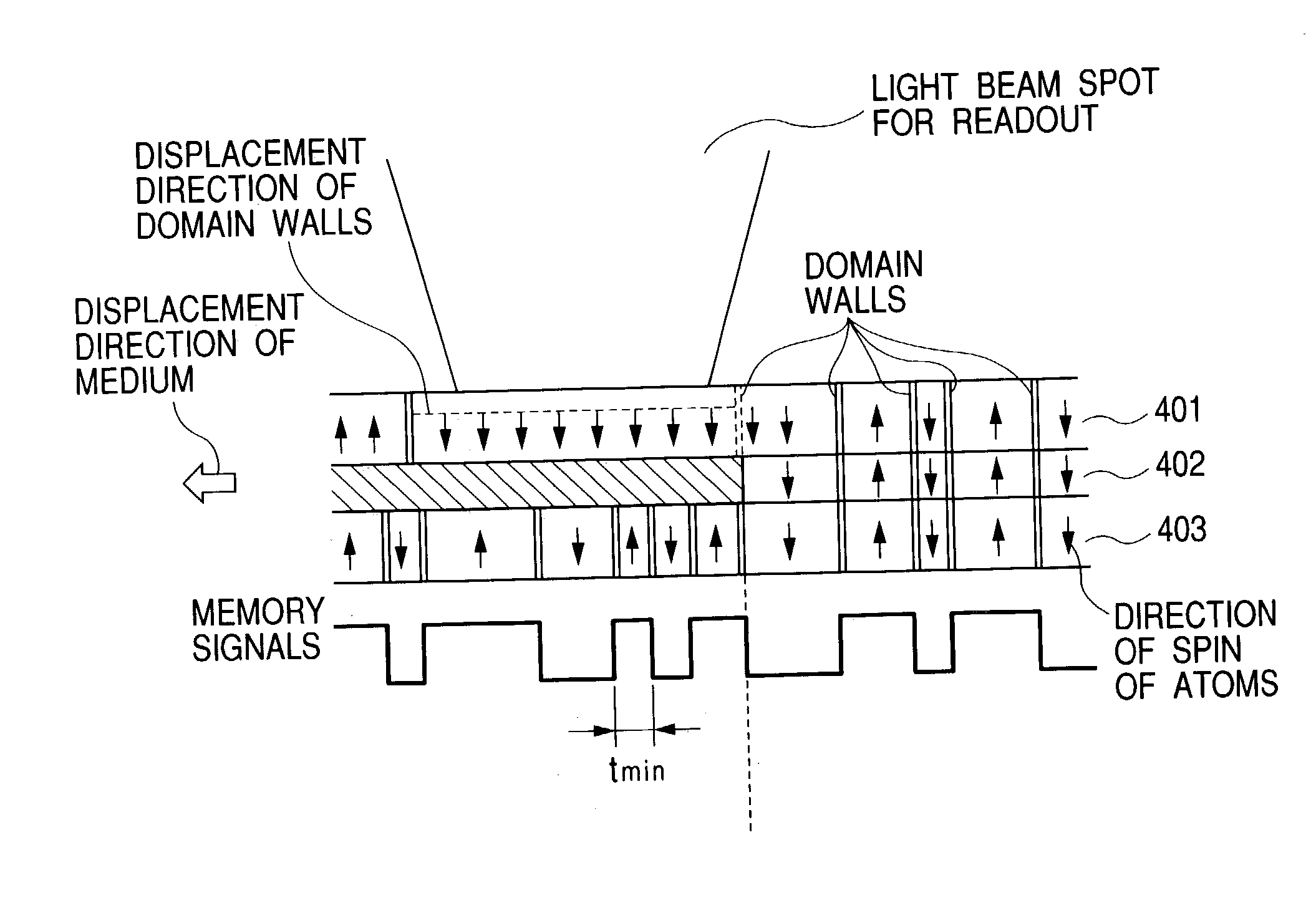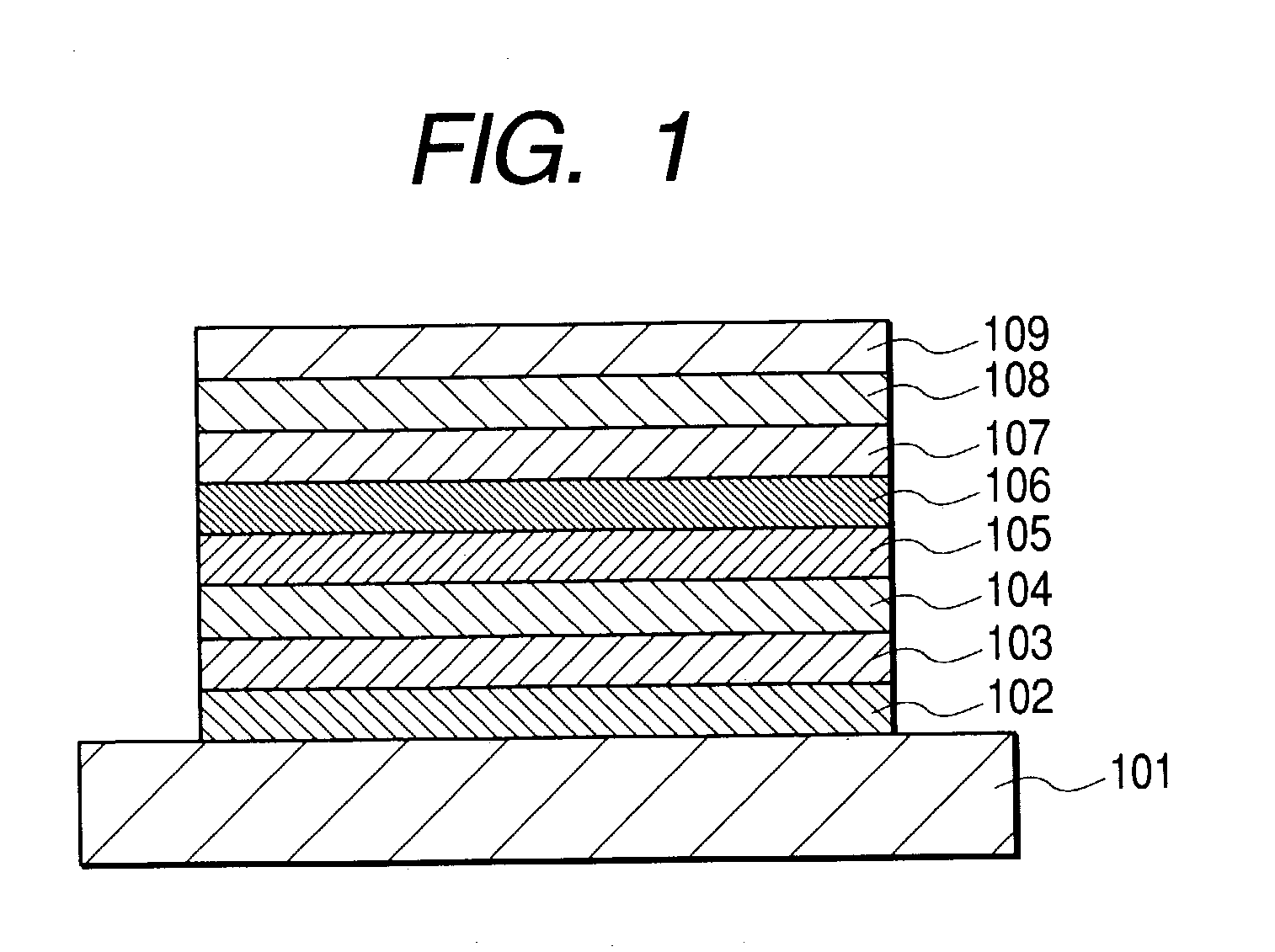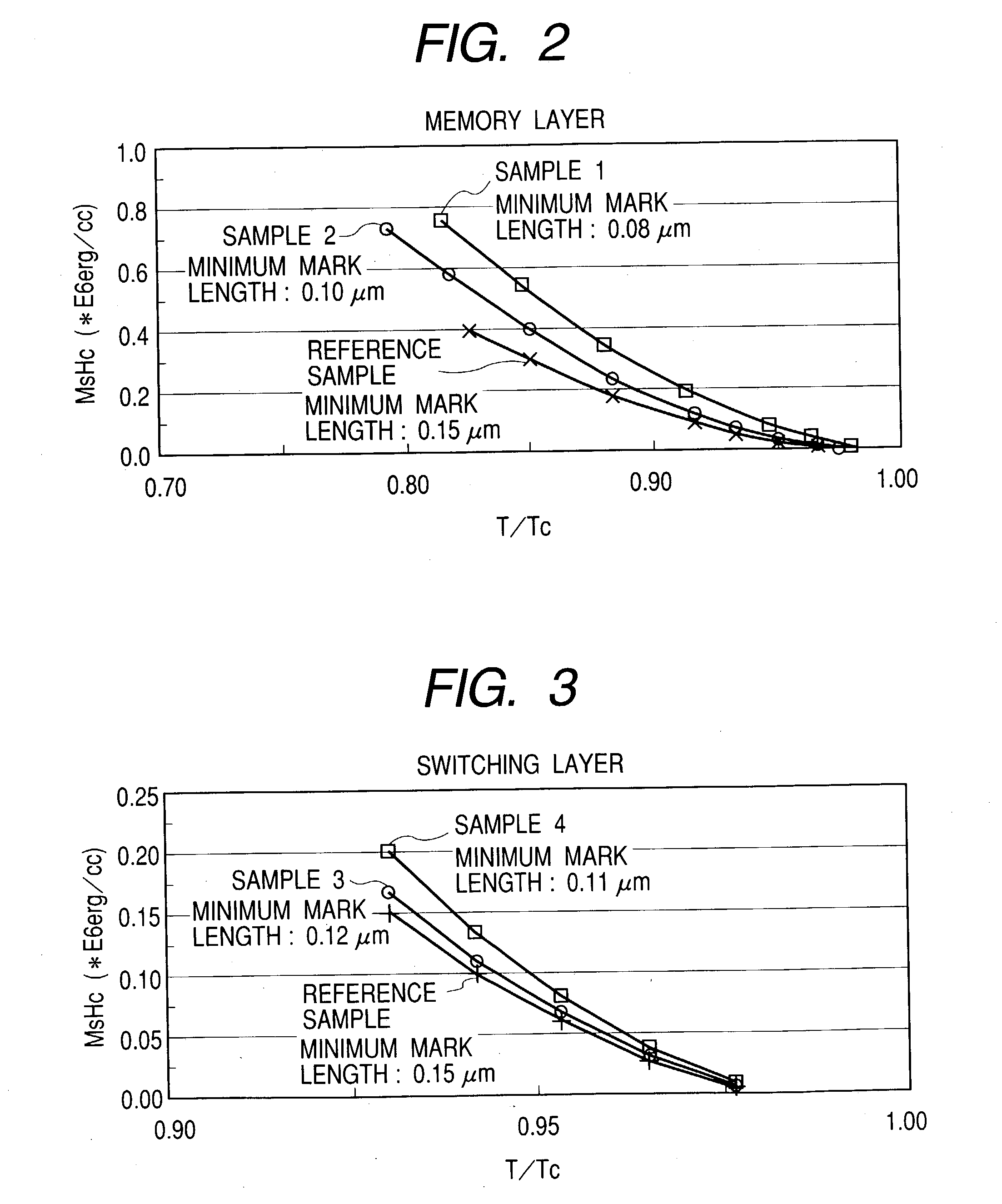Magneto-optic recording medium recordable at ultrahigh recording density
a recording medium and ultrahigh recording density technology, applied in the field of magnetooptic recording mediums, can solve the problems of difficult to make the laser wavelength shorter, severe mechanical precision requirements, and the amplitude of the readout signal may be so small as to achieve no sufficient readout outpu
- Summary
- Abstract
- Description
- Claims
- Application Information
AI Technical Summary
Problems solved by technology
Method used
Image
Examples
Embodiment Construction
[0033] A direct-current magnetron sputtering system was fitted with targets of B-doped Si and also Gd, Tb, FeCr and CoCr, and a polycarbonate substrate in which guide grooves for tracking were formed was fastened to a substrate holder. Then, the inside of a chamber was evacuated by means of a cryopump until it came to a high vacuum of 2.times.10.sup.-5 Pa or less. Thereafter, Ar gas or Kr gas was fed into the chamber as its inside was kept evacuated, and the targets were sputtered rotating the substrate to form each layer. When a SiN layer is formed, N.sub.2 gas is fed in place of Ar gas to carry out direct-current reactive sputtering to form the film.
[0034] In the first place, Ar gas and N.sub.2 gas were made to flow into the chamber and the pressure was set to the desired value by regulating conductance, where an SiN layer was formed as the first dielectric layer in a thickness of 35 nm.
[0035] Magnetic films are formed in a chamber different from that for the dielectric layer beca...
PUM
 Login to View More
Login to View More Abstract
Description
Claims
Application Information
 Login to View More
Login to View More - R&D
- Intellectual Property
- Life Sciences
- Materials
- Tech Scout
- Unparalleled Data Quality
- Higher Quality Content
- 60% Fewer Hallucinations
Browse by: Latest US Patents, China's latest patents, Technical Efficacy Thesaurus, Application Domain, Technology Topic, Popular Technical Reports.
© 2025 PatSnap. All rights reserved.Legal|Privacy policy|Modern Slavery Act Transparency Statement|Sitemap|About US| Contact US: help@patsnap.com



